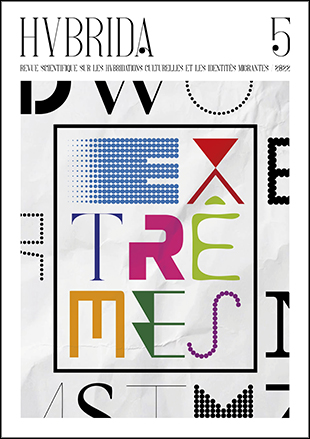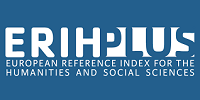Narrative of a 16th century conquest of elsewhere: memory and representations of the historical character Mostafa Al-Azemmouri or Estevanico
DOI:
https://doi.org/10.7203/HYBRIDA.5(12/2022).24045Keywords:
connected history, memory, Mostafa Al-Azemmouri, Estevanico, XVI century, history of discoveries Abstract
Abstract
The purpose of this article is to explore a memory inscribed in the history of the conquest and the great discoveries, in the 16th century, led by an imperial power of the time, Spain. Long presented from the sole perspective of Cabeza de Vaca’s travel report, the memory of the Moroccan explorer Mostafa Al-Azemmouri or Estevanico embodies a Eurocentric vision which has unveiled the contribution of this explorer to the historic event of Meeting. The considerable contribution of subaltern studies, postcolonial studies, associated with reflection on connected history, have carried out a project that projects a look at the memory of denied and concealed identities of the historical moment. These studies discuss a literary and artistic production, from the modern era, which bears an interest in the reconfiguration of memories of the past. That of the historical figure, Al-Azemmouri, finds its manifestation in the novel by Kébir Ammi, Les Vertus immorales, and in the artistic representations that operate in the native space of this explorer, the city of Azemmour.
 Downloads
Downloads
 References
References
Ammi, K. M. (2009). Les Vertus immorales. Gallimard.
Appadurai, A. (2001). Après le colonialisme : Les conséquences culturelles de la globalisation. Payot.
Arendt, H. (1983). Condition de l’homme moderne. Calmann-Lévy.
Bertrand, R. (2011). L’Histoire à parts égales. Récits d’une rencontre Orient-Occident (XVIe-XVIIe siècle). Seuil.
Bhabha, H. K. (2007). Les Lieux de la culture : une théorie postcoloniale. Payot.
Bouraoui, H. (2005). Transpoétique : éloge du nomadisme. Mémoire d’encrier.
Braudel, F. (1999). La Méditerranée : espace et histoire. Poche.
Cherpillod, A. (1988). Dictionnaire étymologique des noms d’hommes et de dieux. Masson.
Conrad, J. (1993). Au cœur des ténèbres. Flammarion.
Cabeza de Vaca, A. N. (1837). Voyages, relations et mémoires originaux pour servir à l’histoire de la découverte de l’Amérique (1555), Arthus Bertrand. Wikisource. https://fr.wikisource.org/wiki/Relation_et_Naufrages
Deleuze, G. & Guattari, F. (1980). Mille Plateaux, Capitalisme et schizophrénie II. Les Éditions de Minuit.
Déruelle, A. (2005). Le cas du personnage historique. L’Année balzacienne, (6), 89-108. https://doi.org/10.3917/balz.006.0089
Ducrot, O. & Todorov, T. (1972). Dictionnaire encyclopédique des sciences du langage. Seuil.
Faffa, C. S. (2018). L’écriture de l’entre-deux dans La Trilogie méditerranéenne de Hédi Bouraoui. Revue Socle, 5(11), 222-247. https://www.asjp.cerist.dz/en/downArticle/25/7/1/65182
Foucault, C. (1975). Surveiller et punir. Gallimard.
Gilroy, P. (1993). The Black Atlantic, Modernity and Double Consciousness. Verso.
Goulven, J. (1917). La Place de Mazagan sous la domination portugaise (1502-1769). Émile Larose.
Gruzinski, S. (1991), L’Amérique de la Conquête peinte par les Indiens du Mexique. Flammarion.
Jablonka, I. (2014), L’Histoire est une littérature contemporaine. Seuil.
Lalami, L. (2014). The Moor’s account. Pantheon Books.
Laroui, A. (1970), L’Histoire du Maghreb, tome II. Maspero.
Mabanckou, A. (2013). Lumières de Pointe-Noire. Fiction et Cie.
Ottmani, H. B. D. (2007). Le Fils du Soleil : L’Odyssée d’Estevanico de Azemor. Édition La Porte.
Ricoeur, P. (2000). La Mémoire, l’histoire, l’oubli. Seuil.
Saltani, B. (2021). Zadjal d’Estevanico le Maure ou Rhapsodie de Mostafa d’Azemmour. Sagacita.
Sansal, B. (2007). Harraga. Gallimard.
Sherry, S. (1999). L’Hybridité culturelle. Bibliothèque nationale du Québec.
Subrahmanyam, S. (2017). L’Empire portugais d’Asie (1500-1740). Points.
Sultan, P. (2011). La Scène littéraire postcoloniale. Éditions Le Manuscrit.
Viegnes, M. (1989). L’Esthétique de la nouvelle française au vingtième siècle. Peter Lang.
Zekri, K. (2011). Écrire le carcéral au Maroc. Les Cahiers de l’orient, 102(2), 59-79. https://doi.org/10.3917/lcdlo.102.0059
Zekri, K. (2006). Fictions du réel, Modernité romanesque et écriture du réel au Maroc. L’Harmattan.
Downloads
Published
How to Cite
-
Abstract494
-
PDF (Français )304
Issue
Section
License
![]()
All the documents in the OJS platform are open access and property of their respective authors.
Authors publishing in the journal agree to the following terms:
- Authors keep the rights and guarantee HYBRIDA the right to be the first publication of the document, licensed under a Creative Commons license Attribution-NonCommercial-ShareAlike 4.0 International (CC BY-NC-SA 4.0) that allows others to share the work with an acknowledgement of authorship and publication in the journal.
- Authors are allowed and encouraged to spread their work (once published) through electronic means using personal or institutional websites (institutional open archives, personal websites or professional and academic networks profiles) once the text has been published.
















